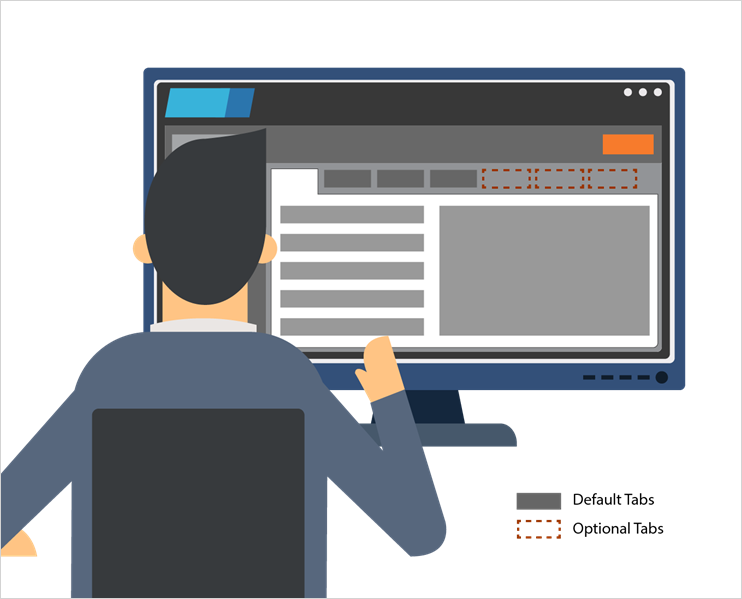
Composite tabs
Composites in Design Time
Composites act as one tab in tab group layout. Once you add a tab with design time, you can add a new section to operate as a widget in the composite. In design time, you can add new fields in each widget.
Admins can reorder fields in the widget, reorder widgets in the tab, and reorder composites in the layout. Admins can also add visibility conditions on widgets. Based on the visibility conditions, widgets can either be shown or hidden in the composites.
Customer composite tabs best practices
Users typically want to display all customer information without having to expand sections or access tabs. This data-centric thinking results in a cluttered desktop with more data than users can assimilate at one time. Establishing guidelines can help with the issue, so follow best practices when designing a customer composite.
If the data is needed less than 80 percent of the time, then make a new composite tab to display the data.
Adding more tabs helps organize the information for an end user. However, users might be presented with tab overload. Displaying numerous tabs that may be unnecessary in a specific context impacts user productivity and learning. Create some conditional tabs to help make the application more user-friendly.
The customer composite is for occasional reference, so if users spend most of their time in the customer composite during an interaction, process flows are inadequate. If needed, redisplay the customer composite data within a service flow process to keep user focus on one area of the screen.
Create the widget in most appropriate layer based on widget functionality. Identify which portions of the widget are configurable.
For list type widgets, leverage tables instead of grids and enable optimize mode. Define templates for list type widgets that anyone can easily clone and modify.
The customer composite is not for data updates or processing. Trying to update data directly from the customer composite bypasses workflow processing and does not guide and advise. Instead, you can launch a service case from the customer composite, which does not bypass the standard process.
Defer the load of tabs to improve performance; this means that the data is not loaded until it is used.
This Topic is available in the following Module:
If you are having problems with your training, please review the Pega Academy Support FAQs.
Want to help us improve this content?

